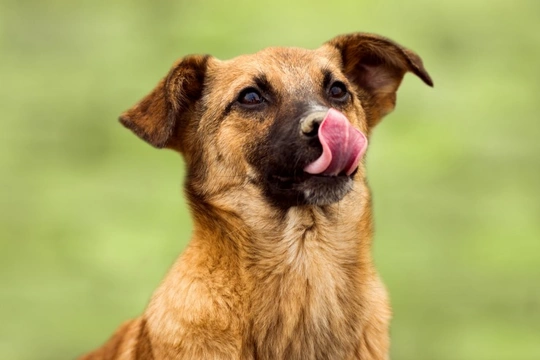
Five interesting things that dogs use their tongues for
We as dog owners don’t tend to think too much about our dog’s tongues, other than if the dog in question is trying to cover us in sloppy kisses or otherwise doing something that involves a lot of slobber! Dogs need their tongues to eat and drink and to help them to make vocalisations too, but this is not the full story, and the tongue of your dog is a very versatile muscle that helps our canine companions to do lots of different things that many owners are unaware of.
In this article we will share five interesting things that dogs use their tongue for, and why. Read on to learn all about your dog’s tongue.
To keep their cool
All of us are familiar with the sight of our dogs panting when it’s hot or if they have been exercising hard, and panting is one of the most effective cooling mechanisms that the dog has to maintain a stable body temperature and avoid overheating.
The tongue plays a huge part in this cooling process, which is why you will often see a hot dog panting with their tongue hanging out. The tongue has a large surface area that is rich in blood vessels and capillaries lying close under the skin, and this all helps with the effective exchange of heat.
When your dog pants, the cooler air from outside passes over the large surface of the tongue, quickly cooling the blood vessels and capillaries within it, which cools the blood that is circulated around the rest of the body, serving to lower the dog’s core temperature.
The same effect is achieved by drinking water, where once again, the large surface of the tongue and its rich supply of blood serve to effectively cool the dog down.
To taste things
Dogs don’t actually have as good a sense of taste as we humans do – in fact, our sense of taste is about six times more acute than that of dogs, and we are able to detect more individual taste profiles too.
The tastes that dogs can detect are sweet, salty, bitter and sour – and most of your dog’s appreciation for food comes from their scenting ability rather than their sense of taste. The tongue of the dog is covered in taste buds that help them to determine if a food is good to eat, if it might be poisonous, or if it has spoiled.
To groom and clean themselves and others
When we think of pets that groom themselves, cats tend to come to mind in the first instance, and most cats are very finnicky about their personal hygiene! However, dogs also groom and clean themselves too, and to do this they use their tongues.
Dogs will commonly groom themselves (and their favourite friends both canine and human too in some cases) using their tongues, and they may also use their tongues to soothe an irritation or sore spot.
To communicate emotions
Dogs have a huge array of different communication tools at their disposal, many of which are very poorly understood by a lot of dog owners. Understanding canine body language isn’t always intuitive for us as people, and your dog’s tongue is an important communication tool for them, and one that is often misunderstood or missed by people.
A dog that is licking their lips or flicking their tongue in and out might appear as if they’re anticipating a delicious treat, and this may be true – but lip-licking is also a calming signal that dogs will use in stressful or daunting situations to signal no threat to another party.
If your dog is being told off or otherwise feels nervous or uncertain, they might lick their lips, which is intended as a calming signal and submissive gesture to let the other dog or human that they are interacting with know that they aren’t looking to cause trouble!
To help to scent things
As we mentioned earlier on, dogs use their sense of smell to enhance their ability to taste foods, and on the flipside, the dog’s tongue can also help them with scenting too.
Moisture helps to intensify a scent and make it easier for a dog to pick up and identify – and so your dog might deliberately lick their nose to add moisture and cause minute scent particles to cling to the nose more effectively, which can help to amplify or decode a scent.
Additionally, dogs have a special scenting organ that we humans don’t have, which is called Jacobson’s Organ or the Vomeronasal Organ. This is located in the top of the dog’s palate close to the nasal cavity, and when your dog sticks their tongue out or opens their mouth, this too can help them to pick up scent particles that are interpreted by this special organ to improve your dog’s scenting acuity.



